Pipeliner is a CRM (Customer Relationship Management) product of which Founder and CEO, Nikolaus Kimla, is extremely proud of. It was and is the first CRM product developed to actually empower salespeople—prior to Pipeliner, a CRM was intended to control salespeople (and in many cases still is). Pipeliner is a true sales enablement tool.
How Pipeliner got there makes for an interesting story, and hopefully, anyone setting out to develop and market a software product can learn from Pipeliner’s own successful experience.
The content in this ebook was originally published as a series of articles in Silicon Prairie News, and was and is intended to educate anyone looking to develop their own software product. These are the lessons Kimla learned— and hopefully you’ll learn from them, too.
- A CRM’s Genesis
- Aiming for Industry Disruption
- Finding an Industry Foothold
- Coming to America, and the Development Explosion
- Going Super Mobile, and the Future in the Cloud
- The Future Revolution
Chapter 1: A CRM’s Genesis
World-Check was a huge success, but when it was sold we no longer had the intellectual property of it. At that point we thought, “What next?”
At this time, by total coincidence, Kimla was invited to an international conference put on by IBM on the subject of sales pipeline management. The idea had been evolved over many years and was very logical, so he was quite drawn to it.
After the conference, Kimla discovered that there was no product behind the concept, either existing or in the planning stages. So he came back to his team, and we thoroughly discussed the idea of a sales pipeline software solution. They decided to move cautiously ahead.
Chapter 2: Aiming for Industry Disruption
While developing Pipeliner CRM, Kimla and his team took a hard look at the answers to this question: what was the difference between Pipeliner and other CRMs? What would be the revolutionary approach? The answers were right there in , their initial research—they simply followed them.
At the time of Pipeliner’s initial development, CRM administration was a full-time job—often requiring more than one person in a larger company. Additionally, this administration required substantial training.
One of the goals for Pipeliner was to make onboarding and implementation something companies could do themselves, without requiring weeks of specialized training. Today, learning Pipeliner onboarding takes a few hours. Pipeliner aimed to do the same thing for administration; today Pipeliner administration is a very part-time job that can be performed by existing staff with a few hours instruction.
Chapter 3: Finding an Industry Foothold
The original company in which Pipeliner was created was an Austrian enterprise integration company doing quite well. They had a lot of success and knowledge—but weren’t a vendor.
When Kimla realized that he had, in Pipeliner, the beginnings of a real scalable product and not a service, he had to think through what to do. Kimla didn’t believe he could compete against the CRM giants like Microsoft, Oracle, and Salesforce.
It didn’t make sense to for Kimla to try and build a big vendor organization. Kimla says, “Americans may not fully understand this, but it really has to do with the mindset: Austria is a small country, and I wasn’t thinking that I had a product that could bring in billions in revenue. How could I get this product to market?”
Chapter 4: Coming to America, and the Development Explosion
At the time Kimla actually considered that the future world markets were in Asia, just based on growth. In the end, though, he decided to bring the company headquarters to America; if a product is released in the U.S., Asia will buy it, too. The same is true of Australia.
It wasn’t easy to pull up stakes and move, but that’s what he did. The whole story of this move is detailed in another ebook called Building a Business.
Chapter 5: Going Super Mobile, and the Future in the Cloud
When Pipeliner had gained hundreds of customers around the world with a very stable product, Kimla realized they needed a true mobile application. Pipeliner did have a mobile version, but they knew that if they were really going to be robust, they had to be native on iOS and Android.
Pipeliner’s native mobile CRM was released in 2016, and today reviewers are saying that they have the best and most advanced mobile CRM on the market. As with Pipeliner’s desktop version, they are constantly improving it— since its release Pipeliner has had an update almost every two months.
Mobile features now include innovations such as business card scanner, text-to-speech, auto-populating of data, total visualization of data, integration of calendar and email, customized fields, and much more.
Chapter 6: The Future Revolution
To say the least, technology is changing rapidly. For evidence we only have to look at GitHub, the web-based hosting service for contributive programming. Shortly after GitHub was developed in 2008, it had 2,000 users, and as of June 2018 has over 28 million. Technology can only make exponential strides with that number of talented people working on code.
Kimla believes we’re at the beginning of a titanic revolution in technology.


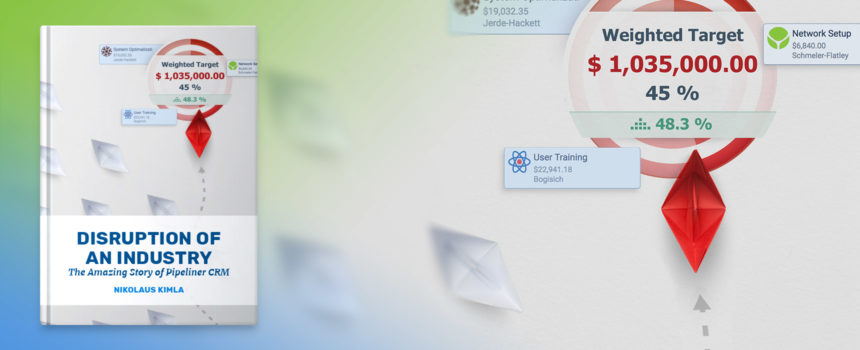
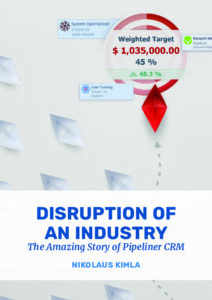
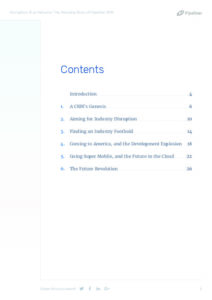
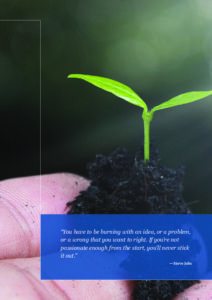
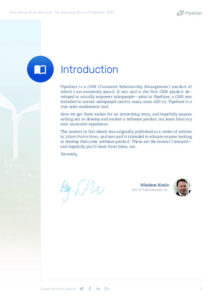




























Comments (5)
Truly amazing story indeed! No wonder Pipeliner CRM is already on Gartner magic quandrant.
This is really Innovative I will say Nikolaus Kimla was really well prepare to face any challenges that will come on his ways. He was a risk taker although he sold World-Check which was a Technology invented by him and his team but this time around was able to come out with the CRM App that serve as a world changer and are competing with world Technology as one of the best Data Management App with all the features. This is quit amazing your initiative and bold step is what will continue to motive not only Sales Professional but also all work of life. through you I have been reminded that consistencies, research and focus always lead to success in terms of Business generally. Nikolaus Kimla I know with the level of your commitment there is still a lot to come.
Good one
God bless the founder of Pipeliner Crm
very inspiring and insightful.